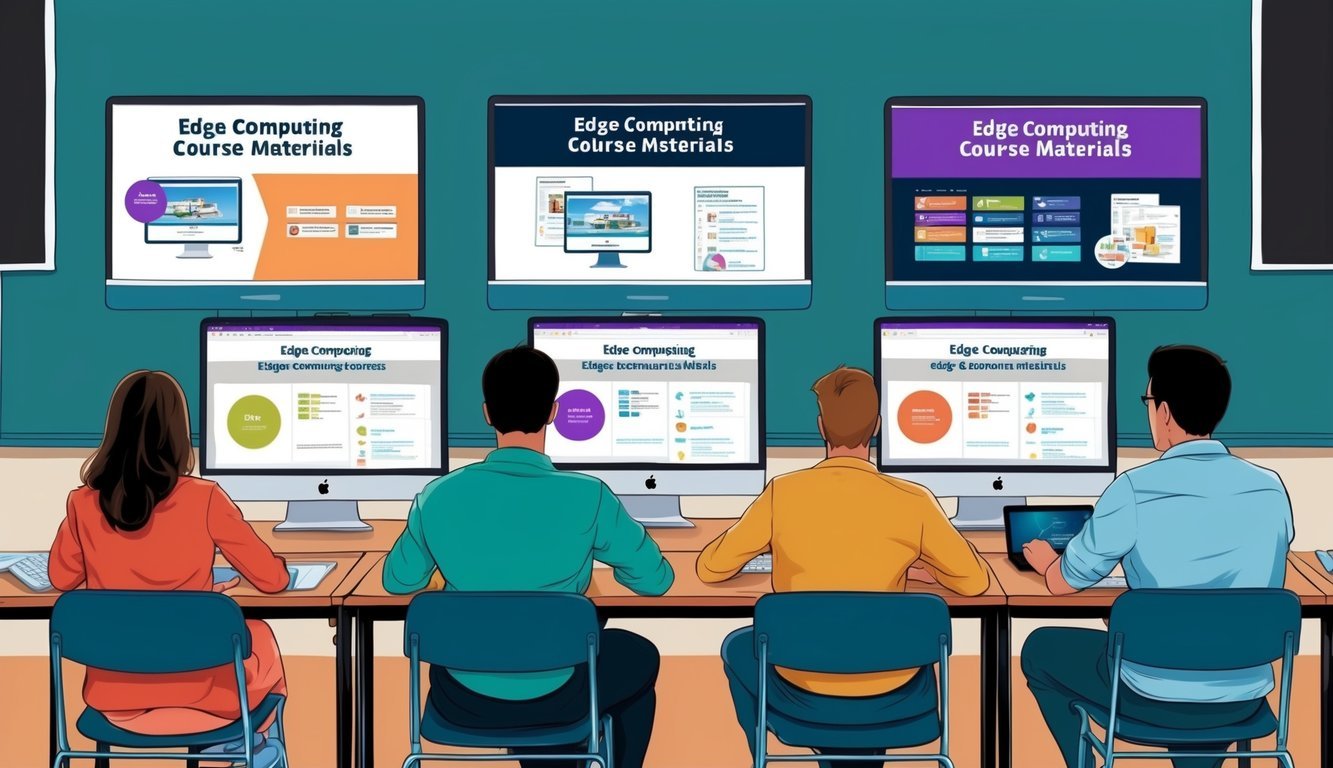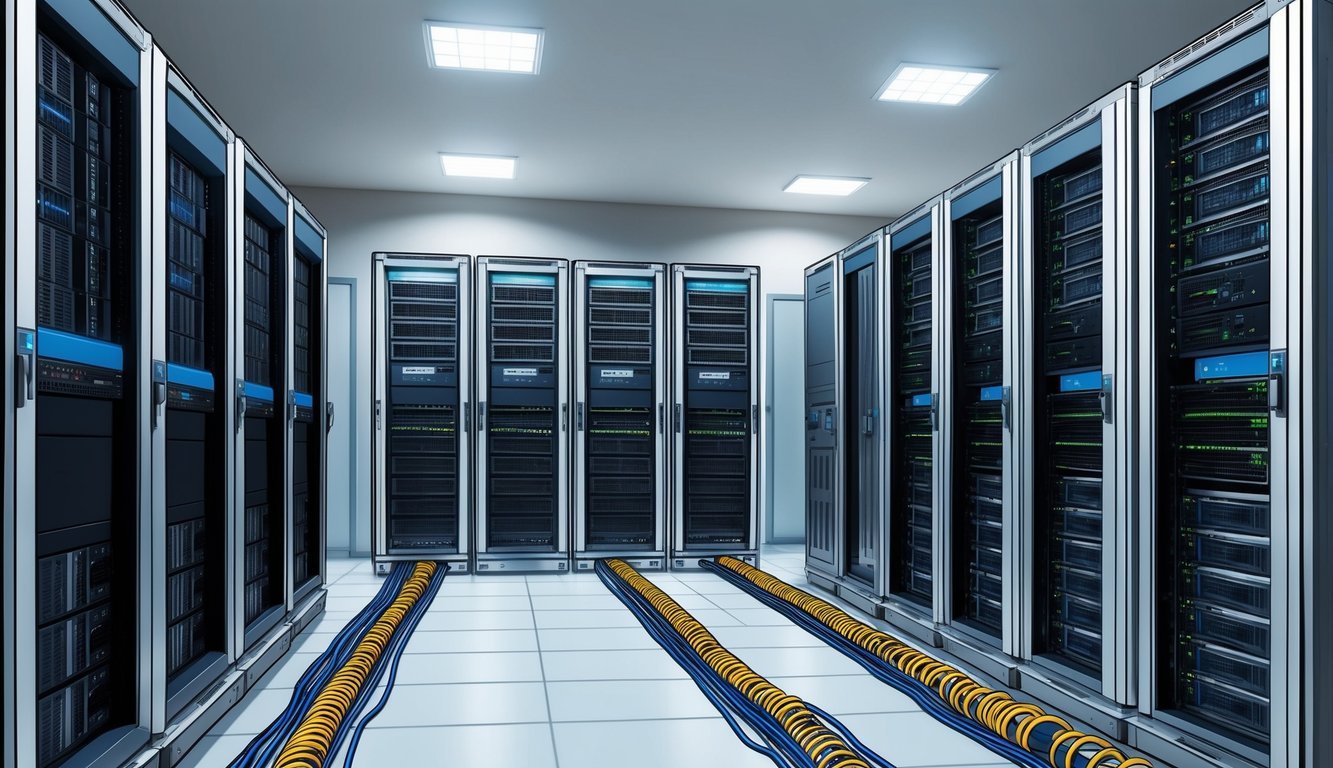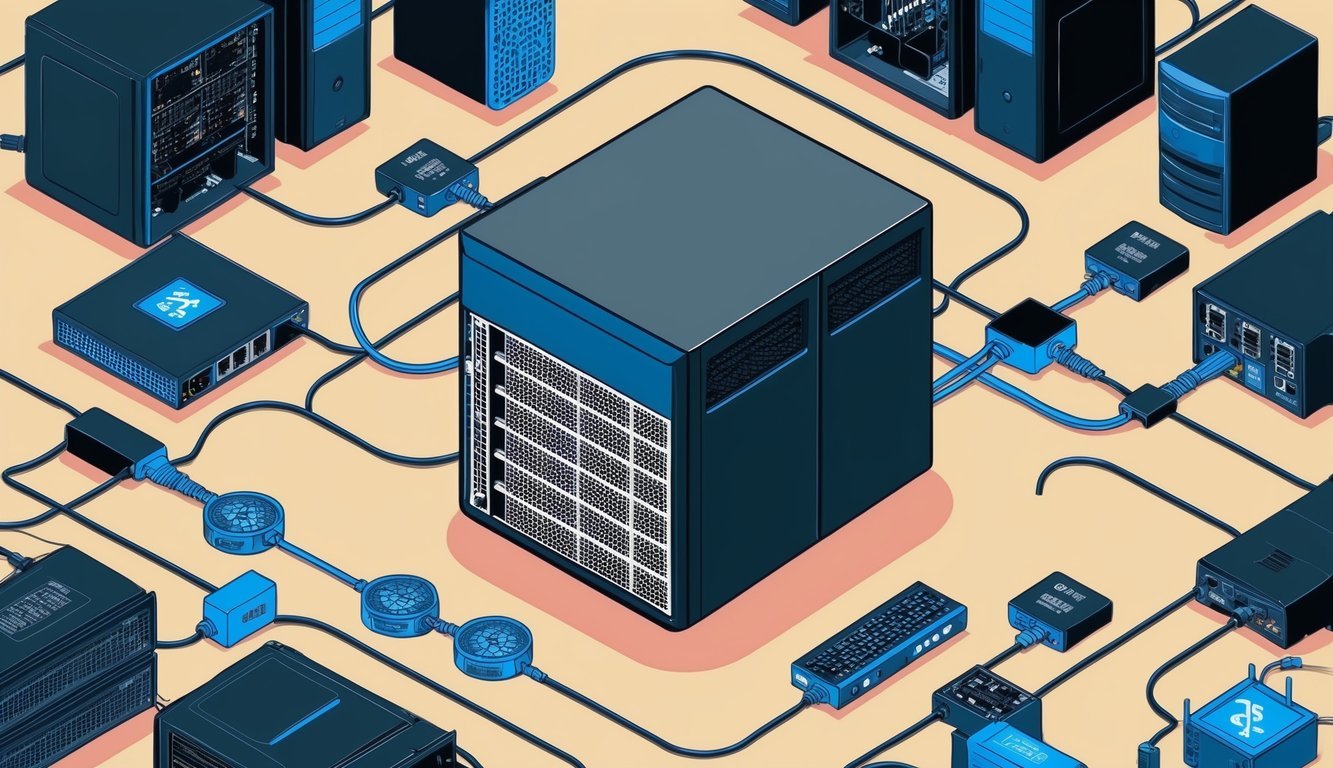Edge computing is shaking things up in the way we process data.
By moving computing closer to where the data originates, it speeds things up and can even save on costs.
Sounds pretty good, right?

You’re probably thinking, “How can I jump on this edge computing bandwagon?” Taking an online course is a fantastic way to sharpen your skills in this booming field. There are tons of options out there, so let’s spotlight a few top picks to get you started.
1) Coursera’s Edge Computing for IoT
If you want to get into edge computing for Internet of Things (IoT), Coursera has some exciting options.
Their course AI Principles with Edge Computing is a cool way to grasp the fundamentals of AI and how it pairs with edge computing in the IoT landscape.
If securing data is more your jam, check out Edge Computing Fundamentals.
It’s tailored for anyone interested in cybersecurity.
Want to understand the business side? Look at Business Considerations for 5G with Edge, IoT, and AI.
It’s all about how these cutting-edge technologies shape various industries.
These courses are perfect for beginners and seasoned pros alike.
You can learn at your own pace, gain hands-on experience, and earn a shiny certificate to flaunt your new skills.
Plus, you’ll get access to expert instructors to guide you.
Whether you’re starting a new career or looking to upgrade your skills, these courses provide a solid foundation.
2) IBM’s Edge Computing Services

Check out their Edge Solutions on Cloud course.
This one dives into how edge computing integrates with IBM Cloud.
You’ll learn how to use these technologies effectively.
For those just starting or wanting a refresher, IBM’s learning path for edge computing is spot-on.
It covers everything from basics to advanced topics, exploring edge architectures and real-world use cases.
What’s great is that you’ll work with real-world examples, giving you practical experience.
Perfect for developers and IT professionals, this training helps you understand how edge computing fits into today’s tech landscape.
Trust me, learning from a tech giant like IBM is priceless for your career.
3) Azure IoT Edge
Want to get savvy about edge computing using Microsoft’s cloud platform? Azure IoT Edge could be just what you need.
This course covers the essentials of IoT Edge, including modules, runtime, and how it connects to the cloud.
You’ll learn to use IoT Edge for real-world problem-solving, helping you decide when edge computing is the right call instead of relying solely on the cloud.
And if you’re into AI, don’t miss out on the AI Edge Engineer path.
It steps up your knowledge, covering how to utilize machine learning right at the edge, making smart choices where the data is generated.
For a fast overview, check out the Learning Azure IoT Edge class on LinkedIn.
It covers the basics and the benefits of edge computing, setting a solid foundation for your journey.
4) AWS IoT Greengrass
Want to dive into edge computing with AWS? Check out these courses on AWS IoT Greengrass; they’ll teach you how to build and manage IoT applications on your devices.
IoT Edge Computing: AWS IoT Greengrass is a hands-on course, perfect for gaining real-world experience in your chosen programming language.
If you’re a beginner, try IoT Edge Computing: Introduction to AWS Greengrass.
This covers the basics and helps you understand when to process data at the edge compared to in the cloud.
For our Spanish-speaking friends, check out courses on AWS IoT Greengrass, too.
They illustrate how to set it up for edge computing.
Plus, Pluralsight has an intro course on AWS Greengrass that covers securely running local compute and messaging for your connected devices.
Understanding Edge Computing

Edge computing pulls data processing closer to where it’s needed, transforming how many industries operate.
It’s a game-changer, but what exactly is it and why should you care?
What is Edge Computing?
At its core, edge computing moves data processing to the edge of the network—closer to where the data is generated, rather than in far-off data centers.
Think about a smart traffic light.
It needs to respond quickly, right? With edge computing, it can process information on-site, instead of sending it to some distant server and waiting for a reply.
That means faster decisions when it counts.
You can find edge computing courses that break down how it works, covering the tech that enables on-site processing, from specialized hardware to software designed for speedy data crunching.
Benefits of Edge Computing
Edge computing comes with some impressive perks.
Here’s what you can expect:
- Speed: Since data travels a shorter distance, you get results faster.
- Cost savings: Less data sent to the cloud means slashed bandwidth fees.
- Privacy: Keeping sensitive info local lessens security risks.
- Reliability: Your systems can operate even if the internet takes a break.
Edge computing essentials dive deeper into these benefits, showing you how businesses are adopting edge tech to optimize operations.
For instance, factories can use edge devices to monitor machinery, catching potential issues before they lead to expensive failures.
It’s all about making smart data-driven decisions on-site.
Course Features to Consider

Choosing the right edge computing course? Pay close attention to who’s teaching it and what you’ll actually be doing.
These elements can significantly impact how much you learn.
Instructor Expertise
You’ll want instructors who really know their stuff.
Look for courses led by industry pros who’ve got real-world experience.
If they’ve published research or worked on big projects, even better! Courses like the AWS Certified Solutions Architect program are taught by experts from major tech companies, giving you insider knowledge.
Also, check out their teaching style.
If you can watch sample videos, do it! A knack for making complex concepts simple goes a long way in helping you understand the material.
Hands-On Projects
Honestly, learning by doing beats just listening.
The best courses give you practical opportunities to try what you learn.
Seek out programs with projects or labs that allow you to play around with edge computing tools and real-world problems.
Some edX edge computing courses include hands-on assignments where you may build a small edge network or work with actual devices.
This practice really helps cement what you’ve learned and gives you stackable skills to impress future employers.
Frequently Asked Questions

Edge computing courses can be fantastic for diving into this expanding field.
You’ll find great options for different skill levels and interests, covering key concepts and real-world applications.
Where can I find top-rated edge computing courses online?
You can discover great edge computing courses on popular learning platforms. Coursera’s Edge Computing Fundamentals is a solid course that covers essential topics and is part of a broader program on edge security.
They also offer the AI Principles with Edge Computing course, which explores how AI and edge technologies work together.
Are there any free edge computing courses available?
You bet! There are free edge computing courses online.
Some platforms offer free trials or audit options, allowing you to access materials without spending a dime.
Check out Class Central for a variety of free and paid edge computing courses from top-notch institutions.
Who are the major players in the edge computing industry?
Big tech companies are leading the charge in edge computing.
IBM, Microsoft, and Amazon are all at the forefront.
IBM offers Edge Computing Services, Microsoft has Azure IoT Edge, and Amazon provides AWS IoT Greengrass, each bringing their unique strengths to the table.
Can you suggest good cloud computing courses that also cover edge computing?
The AWS Certified Solutions Architect course is an excellent pick.
It covers both cloud and edge computing using AWS technologies.
This course gives you the essentials of cloud computing and how edge computing integrates into it, making it a fantastic option for those working with AWS tools.
What’s the best way to start learning about edge computing?
Start with the basics! Look for introductory courses that explain what edge computing is and how it operates.
Once you’ve got that down, you can tackle more specific topics.
Consider hands-on projects to reinforce your learning; many courses include labs or exercises to help you apply your skills practically.
What are some practical applications of edge computing being used today?
Many different industries are harnessing edge computing’s power.
For instance, it enhances the safety of self-driving cars by facilitating rapid data processing.
Smart cities are optimizing traffic and energy consumption using edge computing, too.
In factories, it helps machines run more efficiently, and in healthcare, it facilitates quick patient monitoring and data processing.
Talk about making an impact!

